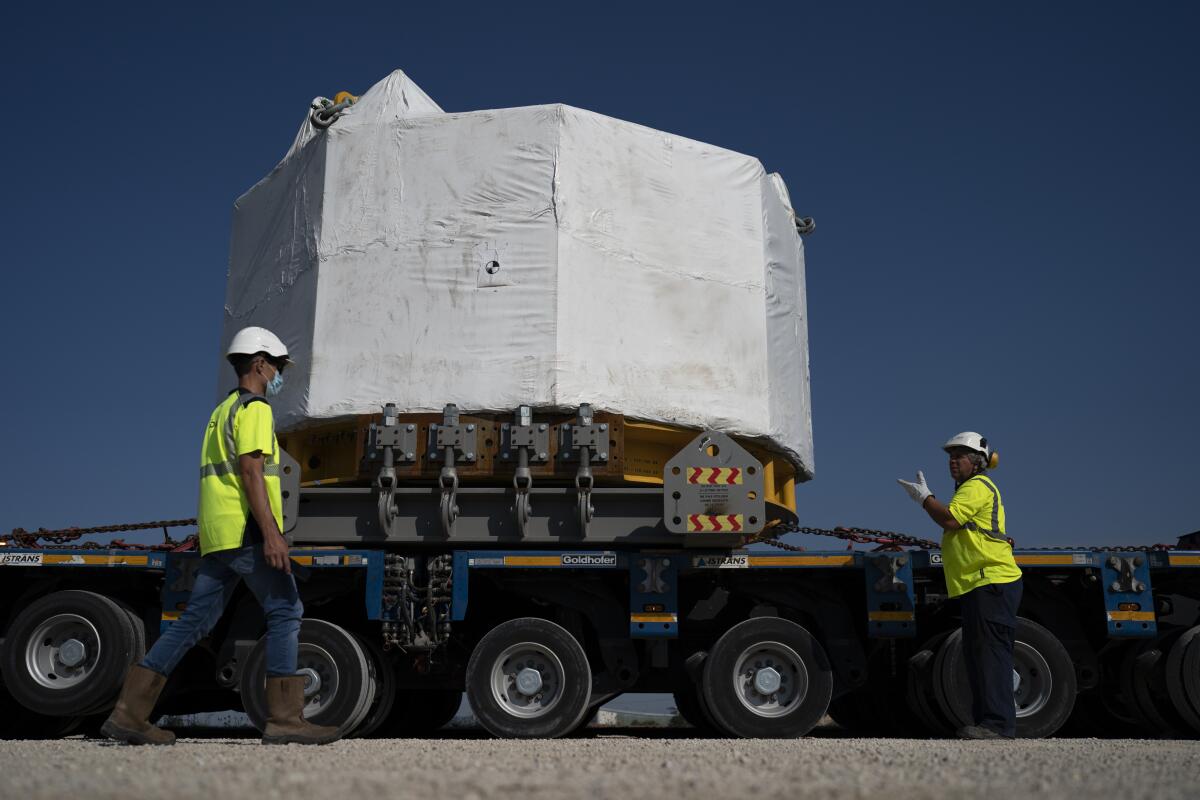Opinion: Renewable energy is overrated. Nuclear fusion is key to our future.

Significant recent advances in fusion science and technology could potentially put the first utility-scale fusion power plants on the grid as soon as the 2040s.
Roper is a technology investor, civic leader and former CFO of SAIC. He lives in La Jolla.
An essay published in The San Diego Union-Tribune last month headlined “Nuclear power is not the answer to San Diego County’s clean energy needs” was misleading at best and clearly out-of-date. The primary flaw is that it considered only the nuclear fission process of yesterday, while making no mention of emerging nuclear fusion technology that promises to provide the majority of the world’s power requirements in the future.
In fact, while renewable energy sources such as solar, wind, geothermal and hydroelectric may be helpful today to bridge the clean energy gap for the next couple of decades, each of these technologies has significant limitations that make them unlikely to serve as long-term solutions for the world’s rapidly increasing clean power requirements through the end of the 21st century.
We provide this platform for community commentary free of charge. Thank you to all the Union-Tribune subscribers whose support makes our journalism possible. If you are not a subscriber, please consider becoming one today.
Both solar and wind are intermittent sources, which only produce power when the sun shines or sufficient winds blow. In order for them to replace fossil-fuel generation and meet our clean energy goals, both solar and wind farms will require expensive energy storage systems to mitigate this intermittency. As a result, these “green power plants” consume huge amounts of capital and are costly to operate.
Further, despite the usual narrative, solar and wind generation have a significant carbon footprint and create negative environmental impacts. Their component manufacturing and disposition at the end of their relatively short life cycles (about 20 years versus 50-plus years for a power plant) have mitigation challenges that have not yet been resolved. Wind and solar plants also require vast amounts of land, and routinely generate substantial community opposition to local power plant development.
Geothermal and hydroelectric sources can be useful in transitioning to a clean grid. However, they each have very specific geographic constraints with respect to where they can be sited. If not located near major urban centers, the requirement for new and very costly transmission lines make the power production uneconomic; for instance, the Sunrise Power Link, a 90-mile transmission line which transmits power from geothermal sources in Imperial County to San Diego, cost nearly $2 billion more than 10 years ago. Therefore, it is unlikely that these technologies will be able to provide any meaningful amount of power for many developed areas, particularly Southern California.
Fusion energy will have none of these challenges. It is clean and safe, with fuel requirements that can be satisfied by seawater. Yes, seawater! Unlike solar and wind, fusion plants will operate around the clock, yet with none of the environmental impacts of fossil and hydroelectric plants.
The common joke about fusion energy has been that it is about 20 years away and always will be. However, significant recent advances in fusion science and technology could potentially put the first utility-scale fusion power plants on the grid as soon as the 2040s.
As a result of decades of research and technological advancement around the world, most of the key science questions about fusion have been resolved. Remaining challenges are mostly those of engineering. The biggest challenge thus far has been insufficient funding for the necessary research and development. Fortunately, both governments and private industry are now recognizing the great potential of fusion and the required investment is more forthcoming.
Projects coming online over the next decade, particularly the ITER experiment under construction in France, will resolve fusion’s engineering roadblocks. San Diego’s General Atomics is a key participant as the supplier of a critical component of the ITER project, based on its research and engineering work done here in La Jolla.
Fusion generates energy by combining hydrogen atoms, in a tightly controlled process under extreme heat; the only emission from fusion energy production is heat, which can serve other useful purposes. Importantly, fusion plants cannot explode or melt down. If containment of the process is lost, the reaction simply stops. Fusion plants will generate no long-lived toxic or radioactive waste. The very high energy density of the fusion reaction — higher than fission, gas and coal, and vastly higher than solar, wind or hydro — means fusion plants will have small, efficient footprints and thus lower costs.
All this means that fusion power plants can be safely sited in urban areas, wherever demand requires, with no risk to the public and little requirement for expensive additional transmission infrastructure, unlike hydro, wind and solar plants. Nor will fusion require energy storage, so it will not be competing with the electric vehicle industry (a key element of the clean energy transition) for batteries and their necessary rare earth elements.
Practical, economic generation from fusion is not here yet, but it will be here within most of our lifetimes. In the meantime, renewable energy sources such as solar and wind can bridge the gap between fossil fuels and fusion. However, to be clear, fusion will likely be the energy source of our long-term future.
Get Weekend Opinion on Sundays and Reader Opinion on Mondays
Editorials, commentary and more delivered Sunday morning, and Reader Reaction on Mondays.
You may occasionally receive promotional content from the San Diego Union-Tribune.





